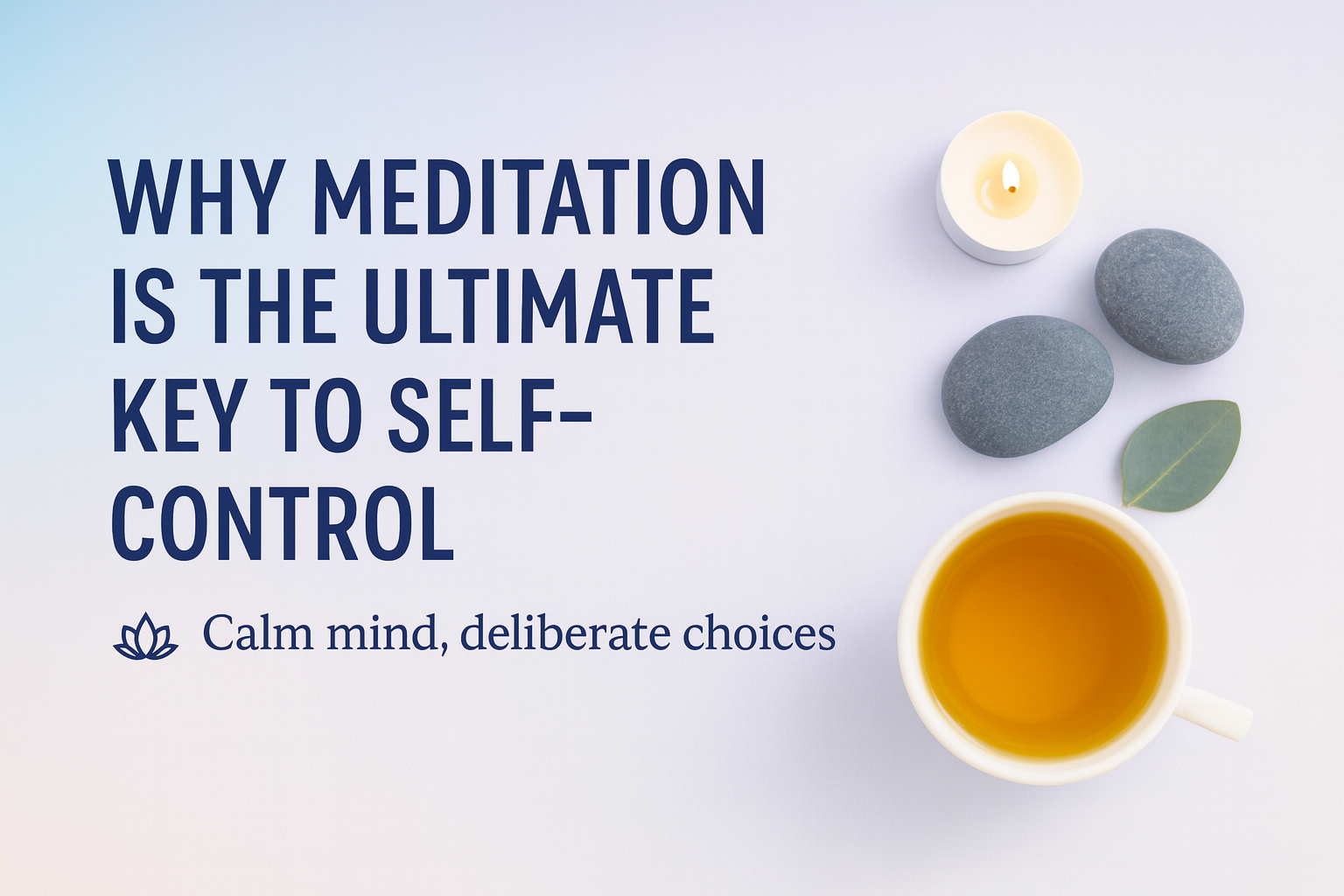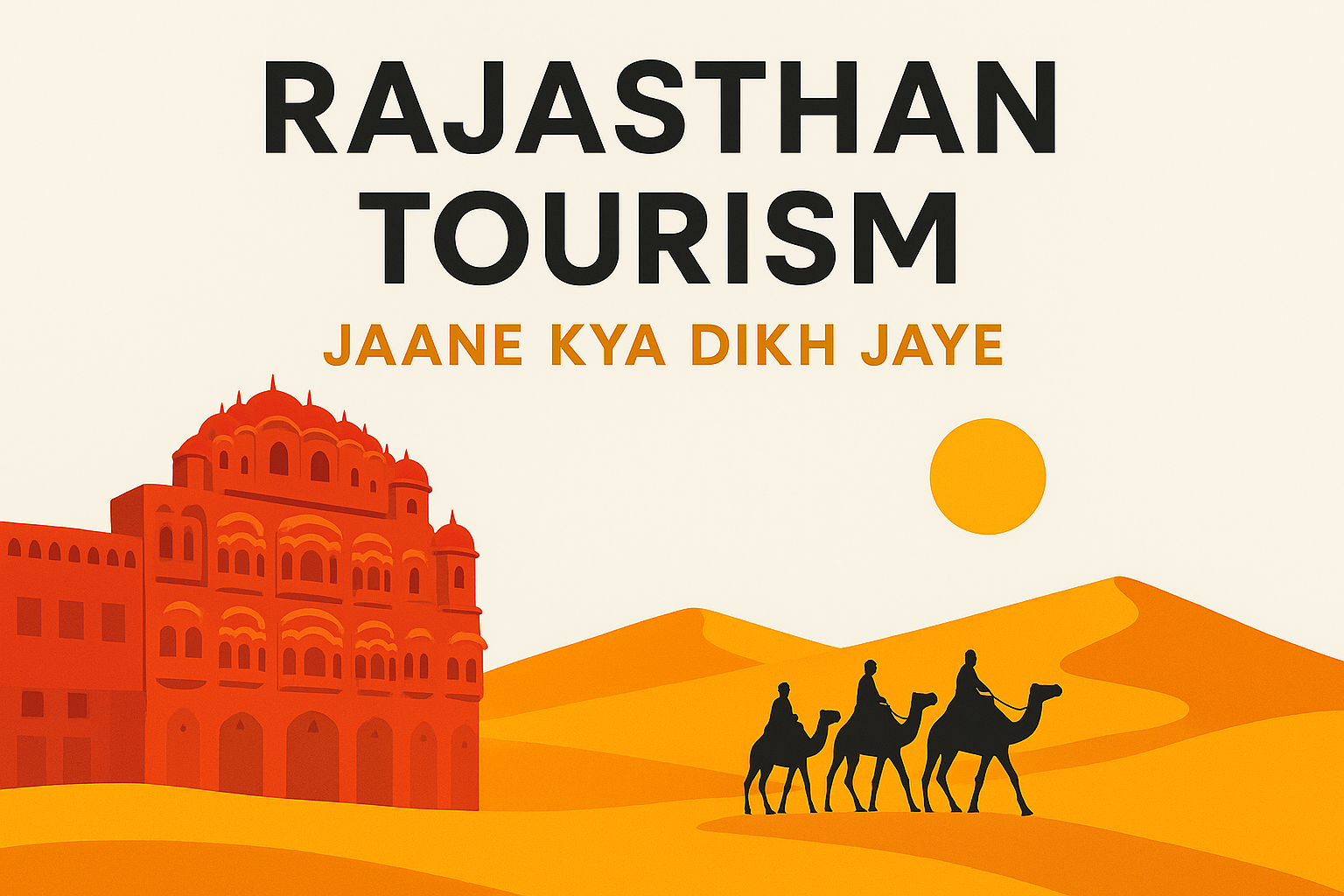It’s 8:57 PM. You promised yourself “no phone after nine,” but one reel becomes twelve and the next thing you know it’s midnight and your to-do list is untouched.
We call this a willpower problem. It’s not. It’s an attention problem—and meditation is the skill that fixes it.
What “self-control” actually is
Self-control isn’t just willpower. It’s a combo of three skills:
-
Awareness: Noticing an impulse early, before it snowballs.
-
Regulation: Steadying the body (breath, heart rate, tension) so urges lose intensity.
-
Choice: Creating a small pause between trigger and action.
Meditation strengthens all three at once. It’s like strength training for attention and calm.
Why meditation works when willpower runs out
-
It upgrades attention. A distracted mind chases every urge. Meditation sharpens focus, which makes it easier to spot impulses and steer attention somewhere useful.
-
It calms the body. Slow, steady breathing signals safety to your nervous system. A calmer body sends quieter “act now” messages.
-
It rewires habit loops. By watching cravings without feeding them, you weaken the cue→craving→action pattern. Over time, urges show up less often and leave faster.
-
It builds capacity, not resistance. You’re not white-knuckling; you’re increasing the space in which a smarter response can happen.
“But I can’t stop my thoughts”
Good news: you don’t need to. Meditation isn’t about blanking the mind; it’s about seeing the mind.
When you notice “ah, craving… planning… irritation,” you’ve already stepped into the observer’s seat. That tiny shift is self-control.
A simple, proof-of-life exercise (2 minutes)
Try this right now:
-
Sit comfortably.
-
Breathe in for 4, out for 6, through the nose.
-
Count each exhale until you reach 10; then back to 1.
-
When attention wanders, note it (“thinking”) and return to counting.
What happened? You practiced three micro-skills: noticing distraction (awareness), not judging it (regulation), and returning on purpose (choice). That loop—notice, allow, return—is the core of self-control.
Building the habit: the “AAA” method
-
Anchor: Tie meditation to something you already do (after coffee, after brushing teeth).
-
Amount: Start tiny (3–5 minutes). Consistency beats heroics.
-
Approach: Pick one style and keep it simple for two weeks.
Three beginner-friendly styles
-
Breath counting: As above. Ideal for focus.
-
Body scan: Move attention slowly from head to toe, noticing sensation. Great for stress and sleep.
-
Noting practice: Sit and label what arises—“hearing,” “thinking,” “warmth,” “urge.” Perfect for cravings and reactivity.
Applying meditation to real-world self-control
Cravings (food, phone, shopping)
-
Pause for one minute. Feel the urge as raw sensation (tightness in chest, buzzing in fingers).
-
Rate it 0–10. Watch it rise… crest… fall.
-
Decide after the minute. The urge often loses steam once observed.
Anger and conflict
-
Drop your attention into the breath: in for 4, out for 6, three times.
-
Name what you feel—“heat,” “tight jaw,” “racing.”
-
Speak only after the third exhale. You’ll trade reaction for response.
Procrastination
-
Set a 3-minute timer. Do the smallest next step.
-
When anxiety spikes, note it, breathe out longer than you breathe in, and continue.
-
Finish the 3 minutes. Momentum beats mood.
Common roadblocks (and fixes)
-
“I’m too busy.” Use micro-sits: 60 seconds before emails, calls, or meals. Five micro-sits a day beats one long session you skip.
-
“I get bored.” Boredom is a signal that attention wants novelty. Note “boredom,” widen your field (sounds, contact with chair), and continue.
-
“I keep forgetting.” Place a sticky note on your phone or kettle, or set a recurring calendar ping. Tie the cue to something physical.
-
“No results yet.” Measure the right thing: not “perfect calm,” but how quickly you notice and return. That’s the muscle getting stronger.
How long until you notice changes?
Most people feel small wins—shorter fuse, easier focus—within 1–2 weeks of daily 5–10-minute practice. Bigger shifts in reactivity and habits usually show up over 6–8 weeks. The timeline isn’t magic; it matches how long it takes the brain and nervous system to groove new patterns.
A 14-day starter plan
Days 1–3: 3 minutes
Days 4–7: 5 minutes
Days 8–11: 7 minutes
Days 12–14: 10 minutes
-
Combine: 5 minutes breath, 5 minutes noting.
-
Add one “real-life rep”: before a tough message or meeting, 3 slow exhales.
The quiet payoff
Self-control becomes less about saying “no” and more about saying “yes” to what matters. You’ll notice urges sooner, feel them with less panic, and choose with more intention. That shift—from compulsion to deliberate action—is meditation’s real gift.
FAQs
Do I need an app? No. A timer works. An app can help reminders and guided sessions if you like structure.
What if I miss a day? Start again next day. No penalty. Consistency is a direction, not a streak.
Can I meditate lying down? For sleep, yes. For focus and self-control, sit upright—alert body, alert mind.
From Friction to Flow
When the mind settles, choices simplify. The snack, the scroll, the snap—they lose their grip. Sit, breathe, notice, return. Repeat until your days move in the direction you meant.
7-Day Challenge
For the next 7 days:
-
5 minutes after waking
-
60-second urge-watch before any scroll
-
3 slow exhales before hard conversations
On day 8, check your fuse, focus, and cravings. You’ll see the needle move.
Notice. Allow. Return. Choose.
Say it. Sit with it. Live it.








Leave a Comment - (Links Acceptable)